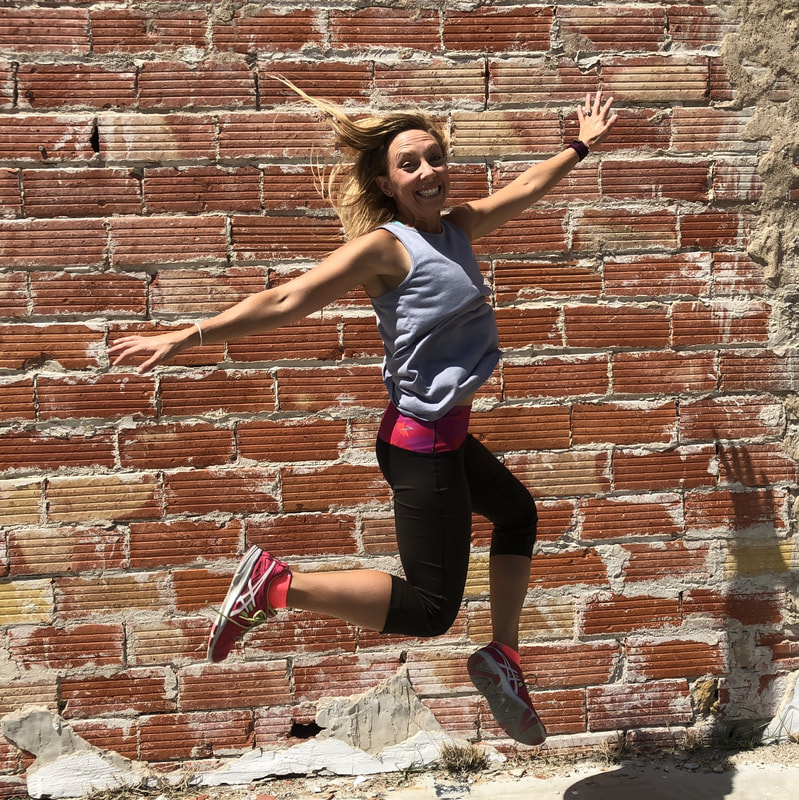YESTERDAY...Colorado State University's ATC Annie Lopez shared with us the science behind an ankle sprain and some basic treatments. Today, she continues to answer some of our questions about rehab and prevention!
I have a sprained ankle - can I keep running?
Annie: Rest is great, but most athletically inclined people don’t want to spend the next couple months allowing the injury to heal itself with time. You want to keep exercising without causing more damage or prolonging your injury right? If you are running relatively pain free go for it. If you are able to run without a limp and with manageable pain that is ok. You are not causing further damage unless you happen to roll your ankle again. You can also invest in an ankle brace or sleeve to give you some added support and protection. You may not have access to the fancy brands but Wal-Mart and Target even have some braces that work just great. Just make sure to ice regularly to control increased swelling that may occur from your workouts.
If I'm not running, what are other good workouts for me to maintain my fitness with an ankle injury?
Annie: Elliptical, bike, stair climber, swimming, even running in a pool are good options for alternate workouts until your ankle is feeling stronger. These workouts will reduce the pounding and weight put on your injured ankle. Tabata training and resistance training are also good options for while you are having to stay off the road or treadmill. But I suppose the latter options will raise another number of questions for your ankle…maybe next time ;)
Are there things I can do at home to help me recover faster?
Anniw: Yes! Have I mentioned ice yet? No need to go out and buy a fancy gel ice bag. Frozen peas or corn work like a charm. There are also a number of exercises to help increase any motion lost in your ankle from the initial injury as well as strengthening and balance exercises.
Ankle range of motion, foot and ankle strength, and balance and proprioception are all factors that need to be improved on to help your ankle recover faster and even prevent another ankle mishap. Using a towel can be a good way to help strengthen the little intrinsic muscles in the foot. These little muscles may not have been damaged but they help by assisting to support your ankle and foot with walking, running, and just every day activities. For the first exercise you start at the end of the towel and simply crunch and gather the towel with your toes until you get to the other end of the towel.
Ankle range of motion, foot and ankle strength, and balance and proprioception are all factors that need to be improved on to help your ankle recover faster and even prevent another ankle mishap. Using a towel can be a good way to help strengthen the little intrinsic muscles in the foot. These little muscles may not have been damaged but they help by assisting to support your ankle and foot with walking, running, and just every day activities. For the first exercise you start at the end of the towel and simply crunch and gather the towel with your toes until you get to the other end of the towel.
The other towel exercise you start again on the edge of the towel and slide your forefoot from side to side to gather the towel until you get to the other end.
The 4 way ankle series with a theraband works to strengthen your ankle muscles in all 4 directions your ankle moves in. If you don’t have a band you can have someone help you by holding a towel in the same positions and add resistance as you tolerate.
Calf raises also help strengthen your lower legs and calves without any need for equipment.
Another easy exercise you can do easily without fancy equipment is standing on a single leg to work on balance. You can stand on a pillow to make it more difficult or close your eyes.
How can I prevent this from happening again?
Annie: I always suggest to my athletes to make sure to invest in proper footwear. Wearing a running shoe that is built for your foot type can help prevent injuries. Also the exercises explained above can strengthen and support the structures surrounding the injured ligaments. The injured ligaments will take some time to fully heal, but that does not mean the injury needs to bench you completely. Another thing I suggest to runners is to incorporate strength and resistance training into your regiment. Strength training will help keep you strong enough to withstand repetitive stress on your legs. Working both large and small muscle groups in your legs will give you a good supportive base.
Disclaimer: Please remember I am not a doctor or certified medical professional. My hope is to provide information from other experts to help my readers. As always, do not treat this as medical advice, and consult your doctor with any injuries or concerns.
Thanks again Annie! Isn't it great to have your own personal ATC sometimes? We'll be featuring ATC tips each month - so be sure to comment or send me a message with YOUR questions for the Athletic Trainer! We will do our best to get them answered soon!











 RSS Feed
RSS Feed
